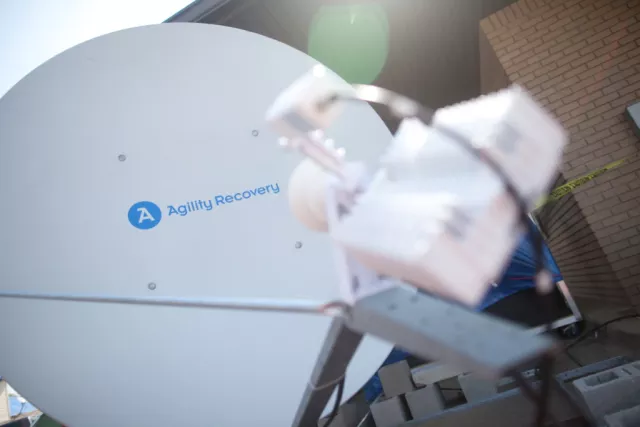12 Things Your Boss Expects You to Know About Business Continuity

This blog post will discuss 12 things your boss expects you to know about business continuity. By knowing these things, you can be better prepared to protect your business during a crisis!
Let's get started.
12 Things Your Boss Expects You to Know About Business Continuity
1. Planning
The first step to business continuity is planning. You need to prepare for what you will do if your business faces a disaster. This plan should include things like how you will keep your employees safe, how you will keep your customers informed, and how you will keep your business running.
Your boss will likely be very upset if you're unfamiliar with the company's plan. A crisis can lead to big problems for a business, and it is vital to be prepared. A comprehensive BC plan and recovery strategy is the best way to protect your business during an emergency.
2. Communication
Communication is vital during a crisis. You need to be able to communicate with your employees, customers, and suppliers. Make sure you have a plan for how you will communicate with everyone. It should include a phone number or email address that everyone can use in an emergency.
It would be best if you also had a plan for how you will keep everyone updated on the situation. Communication is critical to effective business continuity. Having a plan and communicating with everyone can help protect your business.
3. Backup systems
Another critical aspect of business continuity is having backup systems in place. It includes having a backup power supply, backup data storage, and a way to keep your business running if your primary systems fail. Backup systems are vital to keeping your business running during an emergency. These systems can help protect your business from significant problems.
4. Employee training
Training your employees on how to handle a crisis is often neglected. They should know what to do if there is an emergency at work. They should also know how to communicate with you and other employees. Training your employees can help protect your business during a crisis. By having trained employees, you can be sure they know what to do to help protect your business.
5. Customer service
Customer service can't go dark in the event of an emergency. You need to make sure your customers are taken care of.
You should provide updates on the situation, answer questions, and help resolve any problems. Customer service must be a priority for business continuity.
6. Supplier relations
Another critical aspect of business continuity is supplier relations. You need to ensure you have a good relationship with your suppliers because, in an emergency, they help keep your company in business.
This should include having a backup supplier, communicating with your suppliers early and often, and ensuring they can meet your needs. Supplier and third-party vendor relations are vital to business continuity.
7. Financial stability
You must ensure your business has enough money to survive a crisis. This includes having an emergency fund, cutting costs, and protecting stable revenue streams.
Financial stability is paramount to business continuity. By ensuring your business is financially stable, you can help protect it weather the storm.
8. Legal compliance
In the event of an interruption, your boss expects you to be able to maintain compliance with all applicable laws and regulations. This includes things like environmental regulations, safety regulations, and intellectual property laws.
Just because an emergency has struck or you're missing key personnel doesn't mean you can suddenly breach the law.
9. Security
In the event of a crisis, it is essential to have security measures in place to protect your employees, customers, and assets. Ensure you know what security protocols are in place and how to implement them.
Never overlook having a plan for data backup and recovery. In the event of a power outage or natural disaster, you will need to be able to access your data and keep your business running. Ensure you know where your backup files are stored and how to retrieve them.
10. Business impact analysis
A business impact analysis is an essential tool for any business continuity plan. This analysis identifies which aspects of your business are most critical and must be protected. It also assesses the risks that could affect your business and the potential impact. This information is used to develop plans and strategies to protect your business during a disaster.
11. Recovery time objective
The recovery time objective is the amount of time your business can be down before it starts to experience serious consequences. It could be the loss of revenue, data, or customers. It is crucial to have a realistic recovery time objective so that you can plan accordingly. Remember that the goal is to get your business back up and running as quickly as possible.
12. Testing and maintenance
A business continuity plan is not a static document; it should be regularly tested and updated. Business continuity testing ensures that your strategies are effective and that you are prepared to implement them in the event of a disaster. Maintenance ensures that your plans stay up to date as your business changes and grows. Make sure you schedule regular test dates and update your plans accordingly.
These are just a few things your boss will likely expect you to know about business continuity. By knowing these things, you can be better prepared to protect your business during a crisis!
What Is Business Continuity?
Business continuity is the process of maintaining operations during and after an interruption. The goal is to keep the business running, albeit in a limited capacity, until normal operations can be resumed. Many potential interruptions could bring business to a halt, such as natural disasters, key personnel deaths, power outages, cyberattacks, or even pandemics. While it's impossible to plan for every eventuality, having a business continuity plan can help minimize the disruption and get the business back up and running as quickly as possible.
Importance of Business Continuity
- It ensures that the company can continue to operate in the event of an interruption. It could be due to a natural disaster, power outage, or other unforeseen circumstances.
- It helps to protect the company's reputation. If something happens and the company cannot continue operating, having a business continuity plan in place will help to ensure that the company's reputation is not tarnished.
- It can help to save the company money.
By having a plan in place, the company can avoid the cost of shutting down operations and then restarting them later. These factors make the business continuity plan an essential part of any business.
Three Components of Business Continuity
Business continuity has three key components: prevention, protection, and recovery. By focusing on these critical areas, businesses can minimize the impact of disruptions and ensure a quick return to operations.
Prevention is the first and most crucial step in business continuity. It includes identifying potential risks and taking measures to avoid or mitigate them. For example, a company might install backup generators in case of a power outage or implement policies and procedures to prevent data breaches.
Protection is the second component of business continuity. It focuses on minimizing the impact of disruptions when they occur. For example, a company might have duplicate copies of critical data so that it can be recovered quickly in the event of a data loss.
Recovery is the third and final component of business continuity. It ensures that operations can be restored quickly after a disruption. For example, a company might plan to relocate swiftly to another facility if its primary office is damaged or destroyed.
By focusing on these three key components, businesses can minimize the impact of disruptions and ensure a quick return to operations.
Difference Between Business Continuity vs. Disaster Recovery
There are a few critical differences between business continuity and disaster recovery:
- Business continuity focuses on keeping your business running during an interruption, while disaster recovery focuses on getting your business up and running after an interruption.
- Business continuity plans are typically more comprehensive than disaster recovery plans.
- Business continuity plans often include alternate site locations and redundant systems, while disaster recovery plans may only include data backup and restoration.
However, both plans are essential for ensuring the long-term success of your business.
Common Obstacles to Business Continuity Programs
When it comes to implementing a business continuity program, there are many common obstacles that organizations face. Here are some of the most common:
Lack of senior management support
Business continuity programs require buy-in and support from senior management to succeed. Getting other employees on board and allocating the necessary resources can be difficult without this support.
Lack of funding
Business continuity programs can be costly, especially if they require new technology or training. Many organizations lack the budget to adequately fund a program, leading to it being understaffed or poorly equipped.
Lack of understanding
Many people are unsure what a business continuity program is or why it's necessary. This lack of understanding can make it challenging to get employees on board and buy-in from senior management.
Lack of time
Implementing a business continuity program takes time and effort, both in the initial planning stages and ongoing maintenance. Many organizations don't have the time or resources to dedicate to a program.
Inadequate planning
One of the most common problems with business continuity programs is that they are not adequately planned. Plans are often created without input from key stakeholders or considering all potential risks. It can lead to gaps in the program and ultimately to its failure.
If your organization faces any of these obstacles, it's important to address them head-on. Overcoming these challenges is essential to implementing a successful business continuity program.
Who Is Responsible for Managing My Company's Disaster Response and Recovery Efforts?
The answer to this question will likely vary depending on the size and structure of your organization. Smaller companies' responsibility for managing business continuity may fall to a single individual or department.
A dedicated business continuity team may be responsible for developing and implementing plans in larger organizations. Regardless of who is ultimately responsible for managing your company's disaster response and recovery efforts, it is vital that you have a clear understanding of your role and how you can contribute to the action.
If you are unsure who is responsible for managing business continuity in your organization, start by asking your boss or another senior leader. Once you understand the overall structure and responsibility for business continuity, you can begin to develop a plan for how you can best contribute to the effort.
Remember that even if you are not directly responsible for managing business continuity, you can still play an essential role in ensuring your company is prepared for a disaster.
By familiarizing yourself with the company's plans and procedures, you can help ensure that you and your colleagues are prepared to take action in the event of a disruption. Additionally, you can use your knowledge of the company's plans to help identify potential weaknesses or gaps that could be addressed.
Steps to Develop a Business Continuity Plan
1. Identify your critical business functions
What are the functions of your business that are essential to its survival? For each function, ask yourself how long it can be interrupted before it starts to impact your bottom line.
2. Develop strategies for maintaining continuity
For each critical function, develop a plan to maintain continuity during an interruption. It might include things like identifying alternate suppliers or establishing redundant systems.
3. Test your plans
Once you have developed your continuity plans, conduct regular exercises and audits to test them. It will help you identify any weaknesses in your procedures and make necessary adjustments.
4. Communicate your plans
Make sure your employees are aware of your continuity plans and know their roles in the event of an interruption. It will help ensure a smooth and orderly response should an incident occur.
Now that you understand the basics of developing a business continuity plan, you can start implementing one for your organization. Taking these steps can help ensure that your business is prepared for anything.
Conclusion
Developing a business continuity plan is essential for any organization. By taking the time to identify your critical functions and develop strategies for maintaining continuity, you can help ensure that your business is prepared for anything. Regular testing and communication of your plans will help ensure a smooth and orderly response should an incident occur.
While building your business continuity and recovery strategies may seem daunting, it is essential to remember that any steps you take to prepare your business will be beneficial in the long run. By taking the time to develop a plan now, you can help ensure that your business can weather any storm.
Nick Patrocky is a UX/UI designer, app reviewer, software reviewer, and blogger. Nick's worked with over 150+ clients from countries all around the globe. Nick also enjoys reviewing mobile apps, web apps, and websites. Check out his blog if you want to know what it takes to be an app designer or a successful freelancer.



